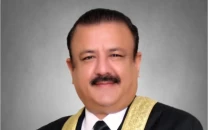The fission of Lashkar-e-Jhangvi
Lashkar-e-Jhangvi, the homegrown sectarian-jihadi outfit is in process of splitting into at least 8 cells.

“Each sub-group is responsible for carrying out activities in a specific geographic location,” disclosed one of the sources on condition of anonymity. Individuals having connections within the group and intelligence officials tackling them said the move appeared to be an attempt to outsmart Pakistani law enforcement agencies.
“It looks like they [LeJ strategists] don’t want to put all their eggs in one basket,” explained a local intelligence official. “It’s a typical guerilla warfare and urban militancy technique. With scattered cells, they have better chances of survival by diverting the focus of law enforcement agencies,” added the official.
The LeJ—an anti-Shia terror icon dominated by militants from Punjab —has established safe hideouts inside North Waziristan, the area controlled by the network of veteran Afghan jihadist, Maulana Jalaluddin Haqqani.
While there are hardly any significant signs suggesting that the Haqqani network is directly supporting anti-Pakistan LeJ activists, security officials contend the two groups have one strong commonality that keeps them connected—both take pride of being staunch allies of Arab al-Qaeda.
Jundullah
The LeJ’s cell for Karachi and Balochistan has been named ‘Jundullah’ but it operates separately from an existing organisation of the same name, led by separatist Iranian Sunnis, that is also active in the region.
“That’s where intelligence agencies’ personnel are often mistaken. They sometimes confuse activists from one group with the other,” an official in Sindh’s Crime Investigation Department (CID) said.
The LeJ is the biggest group operating in Karachi and of 246 terrorists arrested from the city since 2001, 94 belonged to LeJ, according to a secret report by the CID.
Lashkar-e-Jhangvi Al-Almi
This group, headed by Maulana Abdul Khalil, a fugitive militant leader from central Punjab, operates mostly in central parts of Punjab and the tribal areas. The group works in close connection with al Qaeda and its activists are used as foot soldiers for Arab-dominated terror group’s plots inside Pakistan.
Asian Tigers
This group emerged after the recent disappearance of a British journalist of Pakistani origin and two former pro-Taliban personnel of the Inter Services Intelligence (ISI) in North Waziristan. Officials believe it is one of the offshoots of the LeJ and is using a different name to spread confusion.
Like the LeJ itself, the Asian Tigers are dominated by Punjabi militants but some Mehsud militants are affiliated with it as well.
Junoodul Hafsa
This group comprises militants that aim to exact revenge for the storming of Islamabad’s Lal Masjid and its affiliated female seminary, Jamia Hafsa, in a military operation in 2007.
The group operates in close coordination with Ghazi Force, a network named after one of the two clerics of Lal Masjid, Maulana Abdul Rasheed Ghazi, who was killed in the operation.
The outfit, led by a former student of Lal Masjid, Maulana Niaz Rahim, operates out of Ghaljo area of the Orakzai Agency and the adjacent Hangu district and targets military installations and personnel in parts of Khyber-Pakhtunkhwa and upper Punjab, especially Islamabad.
Punjabi Taliban
Several small cells operate under this umbrella outfit including those belonging to Usman Punjabi, Qari Imran, Amjad Farooqi and Qari Zafar. These cells generally target Punjab.
Published in The Express Tribune, November 17th, 2010.



















COMMENTS
Comments are moderated and generally will be posted if they are on-topic and not abusive.
For more information, please see our Comments FAQ